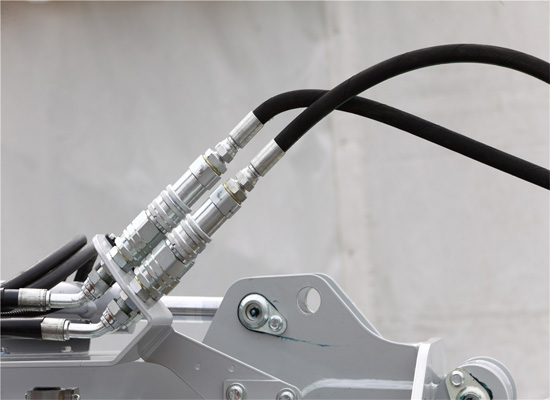Nov 23, 2025
When identifying hydraulic quick couplers, you can examine factors such as structural shape, coupler type, size specifications, thread type, and brand markings.
Identifying hydraulic quick couplings ensures system compatibility, as different couplings vary in size, thread, construction type, sealing method, pressure rating, and flow capacity. It also improves safety, preventing oil spraying, system damage, or accidents caused by incorrect or worn couplings. Furthermore, it optimizes system performance, ensuring efficient hydraulic fluid transmission, reducing pressure loss, and maintaining a tight seal. Finally, it facilitates maintenance and replacement, making regular inspections, seal replacements, or system upgrades easier and more reliable.
Quickly connect and disconnect hydraulic lines to improve equipment operating efficiency.
Achieve efficient sealing and transmission of hydraulic media, ensuring stable system pressure and sufficient flow.
Facilitate system maintenance and component replacement without disassembling the entire pipeline.
Prevent hydraulic leaks, protecting equipment and operator safety.
Suitable for various applications, such as construction machinery, agricultural machinery, and hydraulic industrial equipment.
Inspect Appearance & Structure
Quick couplings generally consist of a male and a female connector.
The male connector is typically a protruding metal plug, while the female connector has a sleeve or locking mechanism.
Measure Size & Thread Type
Measure the diameter of the male and female connectors, insertion length, and the outer or inner diameter of the thread.
Common thread types: BSP, NPT, Metric.
Common sizes: 1/4", 3/8", 1/2", etc.
Confirm Structural Type
Common structures: Ball-lock, Flat-face, Push-to-Connect, Threaded-locking.
Different structures determine the sealing method, flow capacity, and application scenarios.
View Standards & Markings
The connector may be marked with a model number or standard code, such as ISO 7241-A, ISO 16028.
Match Application and Equipment Type
Different equipment uses different connector types, for example:
Excavator hydraulic breaker → Flat-face seal
Agricultural machinery → Ball-lock
Features: Uses ball locking mechanism for quick and reliable connection and disconnection.
Typical Applications:
Agricultural machinery (tractor hydraulic attachments)
Light to medium construction equipment
Portable hydraulic tools
Advantages: Suitable for low to medium pressure systems; ideal for frequent connect/disconnect operations.
Features: Flat sealing surfaces reduce oil leakage and cavitation.
Typical Applications:
Excavator hydraulic breakers
Construction machinery hydraulic lines
High-pressure hydraulic systems
Advantages: Minimizes fluid loss and prevents air ingress; ideal for high-pressure and frequent-use applications.
Features: Simply push to connect; no rotation or extra tools required.
Typical Applications:
Automated production line hydraulic components
Small hydraulic devices
Low-pressure portable equipment
Advantages: Quick and easy operation; suitable for low-pressure, fast-change scenarios.
Features: Secured by threaded connection, very robust.
Typical Applications:
High-pressure industrial hydraulic systems
Oil and mining hydraulic equipment
Long-term fixed hydraulic lines
Advantages: High pressure rating; ideal for high-pressure, stationary, or long-duration applications.
FOKCA Automation Co., Ltd. offers a wide range of hydraulic quick couplers to meet various industrial and hydraulic system needs. Our product line includes: Thread Locking, Flat Face, Push and Pull, Stainless Steel, Medium-Pressure, Ball Valves Type Hydraulic Quick Couplings, and also provides ISO 7241 A/B Quick Couplings.
You May Interest In

Nov 26, 2025 Blog
How to use hydraulic quick coupler?
Nov 25, 2025 Blog
How to replace hydraulic quick coupler?

Sep 01, 2025 Blog
A Guide to 6 Common Hydraulic Quick Coupler ProblemsLinks: www.fescolo.com(Pneumatic)
FOKCA ©1998-2025 All Rights Reserved Sitemap